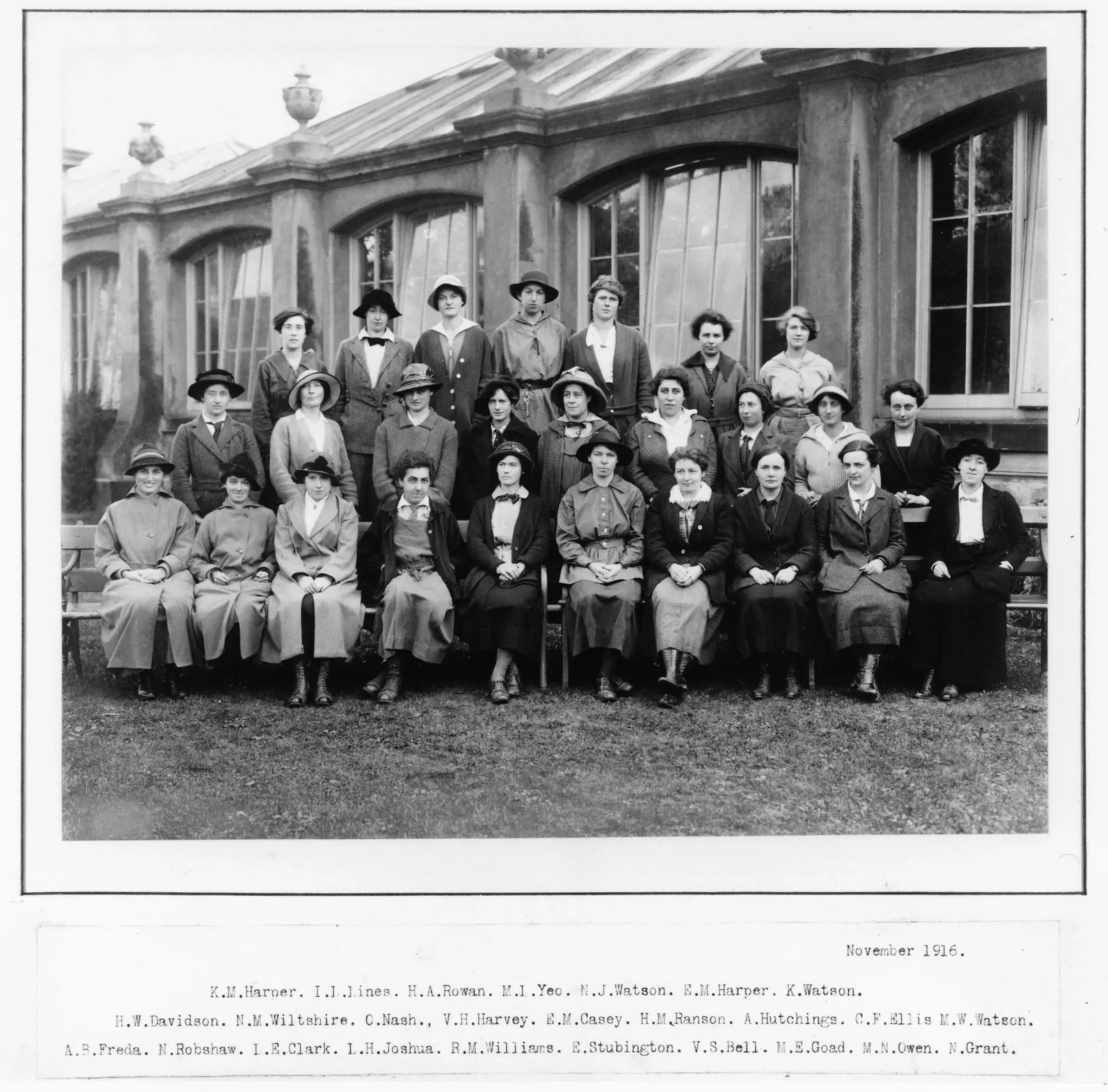20 July 2014
Women gardeners during the First World War
Archives graduate trainee Miriam Hopkinson reveals the important role played by women gardeners at Kew during the First World War.

Gardeners at war
When war broke out in 1914, male staff members at Kew soon left to join the war effort. In June 1915, as the number of gardeners began to dwindle, Kew began employing trained female horticulturalists from horticultural colleges to replace the men who had left for military service.
To begin with, they primarily tended the Herbaceous Grounds, Rock Gardens and Flower Gardens. The Decorative Department even earned itself the nickname of ‘Coutt’s Harem’ due to being staffed almost entirely by women and supervised by Mr John Coutts. As more men left Kew to join the war effort, the women also began to work in the glasshouses.
William Watson, Curator of the Gardens at Kew, writes about the women gardeners in a letter sent to the Gardeners Chronicle:
"...the women have come forward in surprising numbers. In these times it is not a question of skill or experience so much as willingness, intelligence, and some idea of the work, and to discourage the women who offer their services on the farm or in the garden ought to make Mr. Lloyd George angry... their enthusiasm, industry and efficiency are equal to those of the average young man..."
- Gardeners Chronicle, ser. 3, vol. 58, 1915, p. 252
Attitudes to women in horticulture
The large number of women employed at gardens over the war period led to a number of debates regarding women’s general suitability for a career in horticulture. At the end of the war, William Watson wrote an article for the Gardeners Chronicle on this topic. He writes:
"It has been asked whether women are capable of lifting horticulture into a higher place among industrial arts that it has occupied hitherto. The answer to this is that intelligence – brains – will tell, whatever the sex may be... I must own to a conviction that unless the conditions are considerably improved, gardening will not hold out good prospects for educated young women."
- Gardeners Chronicle, ser. 3, vol. 64, 1918, p. 247
However, others are more forthright in their views. For example, in reply to Watson’s article ‘Dubious’ writes:
"...speaking generally, women have proved to be unsuitable for gardening...I feel convinced now that women will never be serious rivals to the men and boys of pre-war days... I think one of the principal reasons of their apparent failure to make headway in gardening is that they enter on it too lightly."
- Gardeners Chronicle, ser. 3, vol. 65, 1919, p. 77
‘A Possible [Brilliant Exception]’, who describes herself as ‘merely a woman gardener’ replies to argue that:
"In my 'varied experience' women are judged much more harshly than men... ‘Dubious’ will doubtless be well content that I (amongst how many others?) felt almost compelled to give up my work, to which I am devoted."
- Gardeners Chronicle, ser. 3, vol. 65, 1919, p. 128
Demand for women gardeners
Despite the negative views towards women gardeners from some within the profession, there was actually a huge demand for women gardeners during the war period. Kew received a number of requests asking for gardeners from Kew and Kew itself sent several letters to the women’s horticultural colleges asking for more gardeners to be sent. It seems that these women had some liberty to choose their preferred workplaces.

Improving conditions for gardeners
The women gardeners at Kew also attempted to improve conditions during their time here, petitioning the curator on issues such as hours of work and rates of pay, on behalf of both the women and the men. One of the gardeners, Lucy Joshua explained that:
"[the women] joined with the men when any matters connected with work cropped up, and in that way we may have helped get some useful concessions"
- Journal of the Kew Guild, vol. 6, 1944, p. 394
For example, one letter in the archives, sent to the Curator William Watson, shows that the gardeners banded together to request a change to the working hours over the summer months.
Although the women worked the same hours as the men, and received the same basic wages, they initially received only half the weekly war bonus payment that the men received. As a result of appeals made by women gardeners, by 1918 they had managed to secure an equal war bonus payment and increased gardener’s basic weekly wages from 21s. to 24s.
By December 1919 only six women gardeners remained at Kew, all of whom worked in the Flower Department. At the end of March 1922, the employment of women gardeners at Kew was ceased completely until the outbreak of the Second World War.
- Miriam Hopkinson -
Archives Graduate


